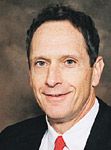Article
Oculoplastic surgery was in its infancy 30 years ago
Today most universities have one or two oculoplastic surgeons on staff.

The American Society of Ophthalmic Plastic and Reconstructive Surgery (ASOPRS) was in its infancy. When I applied for fellowship in 1983, there were approximately five well-known ophthalmologists who incorporated enough oculoplastics in their practices to afford fellowship training. These were Crowell Beard, MD, Byron Smith, MD, Alston Callahan, MD, Marvin Quickert, MD, and Orkan Stasior, MD. Because the University of Iowa Department of Ophthalmology wanted me to start a division in oculoplastics after I finished my training, I was fortunate to train with Drs. Beard, Quickert, and Stasior and returned to Iowa following my fellowship. In 1976 I became the first full-time university-based oculoplastic surgeon, which afforded me many patients and the opportunity to start a fellowship of my own.
Now there are approximately 34 fellowship-training sites and approximately 500 members of the ASOPRS. Today most universities have one or two oculoplastic surgeons on staff. Oculoplastic/orbit has become one of the most sought-after fellowships by the best residents in ophthalmology. The ASOPRS has become a model for other subspecialties and has formal requirements for education, training, and testing in the 2-year fellowship.
Oculoplastics has evolved from a profession where a few surgeons did a few procedures around the eyelids as well as ophthalmology to a subspecialty managing problems of the eyelids, orbit, periorbital region, and face.
The early advances in this field were a change from cookbook procedures for problems to anatomic and physiologic-based surgical techniques and approaches to correct any and all deformities, diseases, and aging changes around the eyelids and orbit. New and better techniques for ptosis, entropion, ectropion, reconstruction of eyelid, and periorbital tumors, lacrimal problems, orbital tumors, thyroid eye disease, blepharospasm, and virtually any functional or cosmetic deformity of the eyelids were published. Oculoplastic surgery rapidly became more scientific and began its own journal, OPRS.
A number of improvements in technology have greatly improved results, including new instruments, fiber optic head lights, rigid fixation for trauma, neurotoxins for functional and cosmetic uses, hyaluronic acid and hydroxyapatite fillers, improved sutures and needles, and improved implants for the orbit and face. Demand combined with the lucrative business related to oculoplastic and facial plastic products will continue to lead to better fillers, neurotoxins, implants, instruments, and techniques in the future.
Until the 1980s most oculoplastic surgeons focused on functional and reconstructive procedures around the eyelids and midface.
In the 1980s and 1990s the economics of medicine, ophthalmology, and oculoplastics changed greatly. Functional procedures were progressively more poorly reimbursed, a trend that continues to date. Baby boomers got older and desired and demanded antidotes to aging. They began seeking the best physicians for cosmetic surgery around the eyelids, midface, and face.
In earlier times, facial and eyelid cosmesis was mainly left to general plastic surgeons. Oculoplastic surgeons were satisfied to do the more difficult and more tedious functional surgeries. Recently, much of the interest and advances in oculoplastics have been in the area of cosmetic surgery. Since most of the serious complications of cosmetic surgery around the eyelids and midface are related to the eye, it was logical that eyelid, brow, and midface surgery fell into the domain of the oculoplastic surgeon.
The upper blepharoplasty is the best approach to internal brow elevation and removing furrow muscles between the brows.1 The lower blepharoplasty is the best approach to elevating the midface. Thus, midfacial rejuvenation is best approached through the eyelids. Most oculoplastic surgeons recognized that facial procedures, with the exception of rhinoplasty, are less tedious and less risky than eyelid surgery. Patient requests for full facial rejuvenation combined with the economics of cosmetic surgery encouraged oculoplastic surgeons to become oculo-facial plastic surgeons. Unfortunately, without doing a large volume of cosmetic surgery, most programs such as ours would be unable to support the quality of their facility, office staff, fellowship training, and research.
Newsletter
Don’t miss out—get Ophthalmology Times updates on the latest clinical advancements and expert interviews, straight to your inbox.





